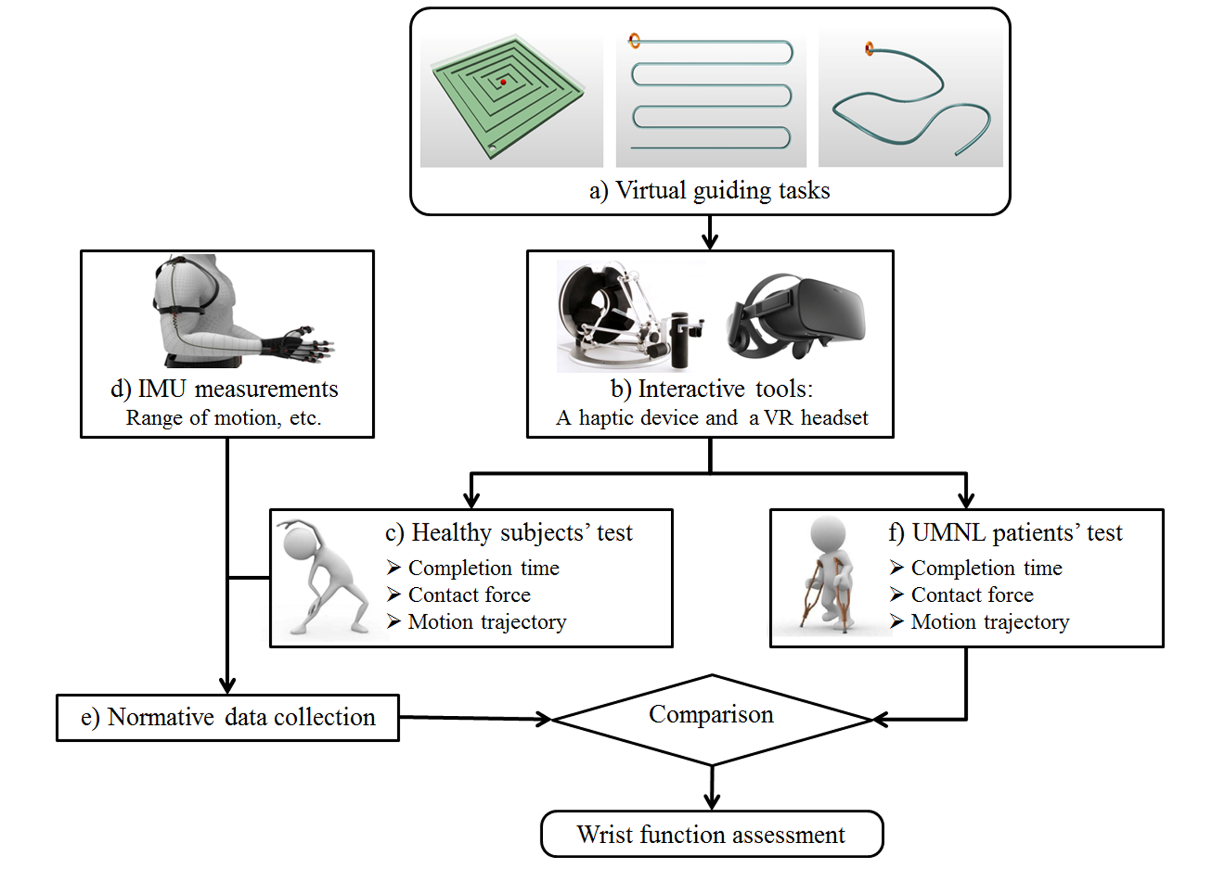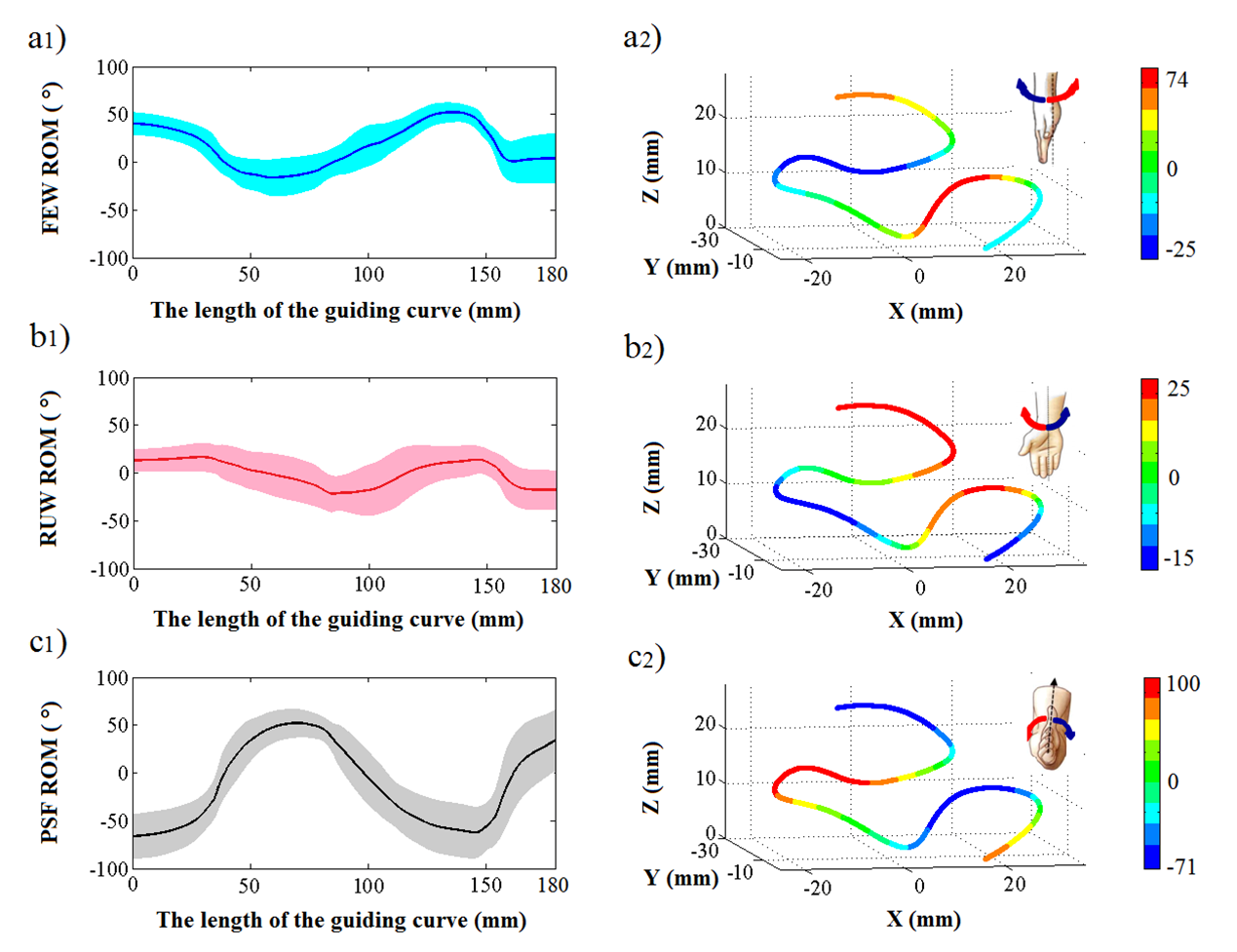Recently, a research by the team of Prof. Fan Yubo on “Design of the virtual guiding tasks with haptic feedback for assessing wrist fine motor functions for patients with upper motor neuron lesions” was published on IEEE Transactions on Neural Systems and Rehabilitation Engineering (Doi 10.1109/TNSRE.2019.2909287). The study is a collaborative effort by the School of Biological Science and Medical Engineering of Beihang University, Beijing Advanced Innovation Centre for Biomedical Engineering, and National Research Center for Rehabilitation Technical Aids. Dr. Liu Xiaoyu from the School of Biological Science and Medical Engineering is the first author, and Prof. Fan Yubo is the corresponding author.

Fig.1 Organization of the overall work. (UMNL, upper motor neuron lesion; VR, virtual reality; IMU, inertial measurement unit)
With the aging of population, both the incidence and growth rate of cerebral apoplexy in China are at the forefront of the world. Human being are able to complete various delicate activities with the control of complex nerve innervation. After stroke, however, more than half of the patients have left hemiplegia of different degrees. Currently, commonly used assessments for motor function, such as Fugl-Meyer Assessment (FMA) and Wolf Motor Function Test (WMFT), focus more on the evaluation of patients’ limb movements, and largely depend on the subjective judgment of rehabilitation physicians.Taking advantage of the haptic feedback and virtual reality technology, this study designs three virtual guiding tasks to assess wrist motor functions, including the basic motor flexibility, motion stability and a range of active motion. Quantitative performances, including the completion time, contact force and motion trajectory, were automatically acquired during the tasks. These parameters quantify the flexibility and stability of patients’ fine motor, and guide patients to carry out targeted training. This technology has broad application prospects in rehabilitation supplementary industry, Internet plus and pension industry.

Fig.2 Wrist angles, including the FEW (a1 and a2), RUW (b1 and b2), and PSF (c1 and c2), required at every position along the guiding curve. a1), b1) and c1) show the wrist angles measured from control subjects according to the length of the guiding curve.
Reported by Guo Meng
Reviewed by Han Huiyu
Edited by Jia Aiping
Translated by Zhao Yue

